The introduction of NB-IoT (Narrowband IoT) and LTE-M (LTE for machine-type communication) revolutionized the landscape for IoT, making the 3GPP (3rd Generation Partnership Project) a key player in IoT enablement. These technologies are collectively referred to as cellular IoT. NB-IoT and LTE-M are such game changers because their design steers away from being optimized for human-type traffic and is instead optimized for mass deployments of IoT devices sending relatively small amounts of data with low power consumption.
Cellular technology can easily be seen as a perfect enabler for LPWANs (Low Power Wide Area Networks) due to its coverage, high mobility, roaming capabilities, and, most notably, its already-deployed infrastructure. However, without a clear understanding of the power-saving features and how to use them to minimize power consumption, battery lifetime can be an issue for devices using cellular IoT.
In this blog post, we will go over the basics of radio activity in cellular communications and its different modes, to enable us to examine power-saving modes in cellular IoT. Afterward, we will briefly introduce extended Discontinuous Reception (eDRX) and Power Saving Mode (PSM) and explain how they operate and reduce power consumption.
This background will set the stage for introducing Release Assistance Indication for Access-Stratum (AS-RAI). We will discuss the importance of AS-RAI and how it operates with PSM and eDRX to further reduce power consumption in cellular IoT. Furthermore, we will present power consumption test results, performed using the nRF9160 DK, to highlight how eDRX, PSM, and AS-RAI work and to what extent these features reduce power consumption in a cellular IoT application.
In subsequent sections, we will learn how RAI reduces power consumption by helping the User Equipment (UE) release the radio resource quicker, thus saving power. If the decision to release the radio resource comes from the radio network via the Access Stratum, it is called AS-RAI. Whereas, if the decision comes from the core network via the non-access stratum (Control Plane), then it’s called CP-RAI. In this blog post, when mentioning RAI, we will be referring to AS-RAI, as CP-RAI is out of the scope of this blog post.
Table of Contents
Radio activity modes in cellular IoT
A UE can be in various modes throughout its lifetime. The two main operational modes for a UE are Radio Resource Control (RRC) connected mode and RRC idle mode, which refers to active mode and idle mode, respectively. Lastly, a UE could also be in shut-down mode.
RRC connected mode
RRC connected mode is the mode where the UE’s radio is active and performing timely bi-directional communications with the eNB (LTE base station), such as performing neighbor cell measurements and synchronization tasks, etc. Consequently, this mode consumes the most power due to radio transmissions and signaling activities.
Common tasks performed in RRC connected mode:
- Sending uplink (UL) messages from the UE to the eNB, i.e., reporting a sensor value
- Receiving downlink (DL) from the eNB, i.e., configuration updates
- Neighbor cell measurements and synchronization tasks
In RRC connected mode, after data transmission, the UE stays connected for a period dictated by the RRC Inactivity Timer. This keeps the device in the RRC connected state, waiting for possible near-term future data transmissions, thereby avoiding the resource-consuming transitions between states. If the UE has more data to send or receive within the timer period, it can do so without the need to move back from an idle state. However, when the RRC Inactivity Timer runs out, the UE is allowed to transition to idle mode.
RRC idle mode
RRC idle mode refers to the state when the UE is switched on, but the radio is not executing high battery-consuming tasks. In RRC idle mode, the UE does the bare minimum to stay connected to the network by staying synchronized to the network and thus reachable. Consequently, battery consumption is low compared to RRC connected mode, but it can be further reduced, as we will see in subsequent sections.
In RRC idle mode, the radio performs keep-alive activities such as:
- Listening to paging messages to be informed when the eNB requires a status update or value reporting
- Performing tracking area updates (TAUs) to update the eNB about the UE’s location for reachability
Power saving features in cellular IoT
Despite some differences, LTE-M and NB-IoT share the need for power-saving features, to further reduce their power consumption and to also give the user some control over the trade-off between availability and battery lifetime. Therefore, power-saving features such as PSM (Power Saving Mode) and eDRX (Extended Discontinuous Reception) were introduced to LTE-M and NB-IoT in 3GPP release 12. Feel free to check out this blog post for a more in-depth comparison between LTE-M and NB-IoT.
The reason for employing power-saving techniques, instead of just turning off the modem, is that the UE stays synchronized with the network and doesn’t have to go through the power-consuming attach procedure to re-establish the connection. Power-saving techniques allow the UE to switch off the radio while still maintaining connectivity and synchronization with the network, mitigating the need for the connection re-establishing procedures.
Discontinuous Reception
One of the basic forms of power saving is Discontinuous Reception (DRX), which simply means the radio can be briefly switched off in between listening intervals. There are several forms of DRX that a UE can operate in.
cDRX
In RRC connected mode, after data transmission, the UE is supposed to stay in RRC connected mode till the RRC Inactivity Timer runs out. During that period, the UE can briefly turn off its radio and instead listen for incoming radio activity in intervals, as opposed to constantly listening. This is called Connected mode DRX (cDRX), as it happens during RRC connected mode.
iDRX
In RRC idle mode, the UE is not expecting much radio activity, so it turns off its radio to save power and listens for incoming downlink radio messages at specific intervals. This is referred to as Idle-mode DRX (iDRX), and is a basic power-saving feature.
eDRX
Extending the iDRX period seems like an idea to make the UE sleep longer and save more power, correct? This is the premise of eDRX, extending the DRX period to further reduce the time the UE is awake.
In eDRX periods, the UE can monitor downlink paging messages from the network less often, thus saving power by not turning its radio on regularly. However, the UE is still attached and registered to the network; all it does is listen to downlink paging messages less frequently and extend its sleep period.
In moments when the UE is not actively listening for paging, it is unreachable to the network. The tradeoff here is the acceptable delay in UE availability vs. the eDRX cycle, which translates to power saving.
Figure 1 shows two different scenarios for eDRX connection states. On the left, the UE wakes up to monitor paging messages without having any. On the right, the UE wakes up to a paging event that requires data transfer. Thus, the UE switches to RRC connected mode for the required data transfer. Then it starts the RRC Inactivity Timer. If the UE receives no more messages before the RRC Inactivity Timer runs out, the UE transitions to RRC idle mode and operates in eDRX again.
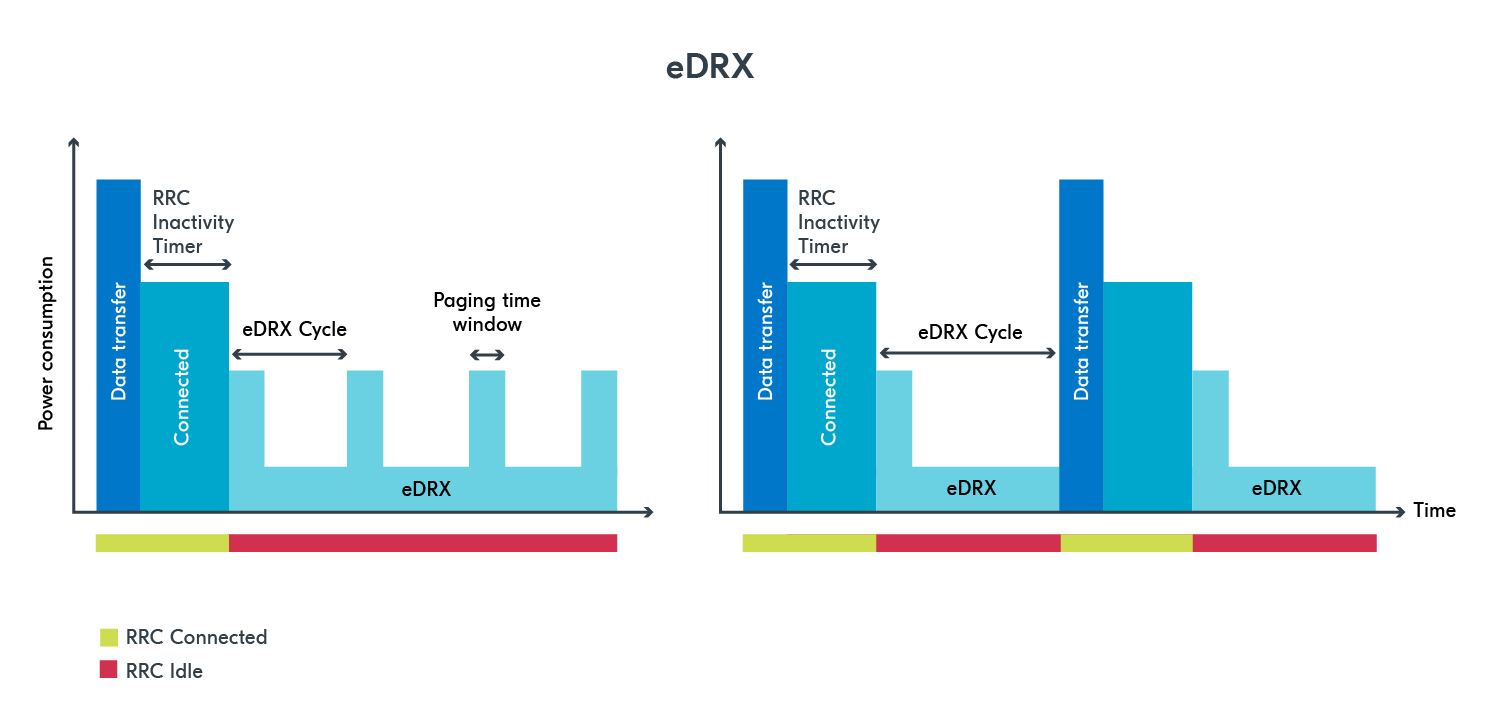
Figure 1: Illustration showing RRC inactivity timer, eDRX cycles and the Paging Time window
PSM
PSM takes power saving to a new level by putting the UE into a deep sleep state. This means that a UE in PSM will not monitor RX paging messages regularly as it would do in eDRX mode. Instead, it will go into a deep sleep for a longer period of time.
However, the UE stays registered and attached to the network to facilitate data transfer upon wakeup. For this to happen, the UE must wake up regularly and send a Tracking Area Update (TAU) to the network. This period is decided by the Periodic TAU timer. A UE in PSM will wake up for one of two reasons, either triggered by the Periodic TAU timer to send a TAU, or by the application to send UL messages. Even though the device can wake up and send UL messages outside of the regular Periodic TAU intervals, it is more power efficient to wait until the next interval to send UL data.
The UE can negotiate with the network for a timer called Active Timer. After a period of RRC connection, when the RRC Inactivity Timer runs out, the UE enters idle mode. However, if PSM is enabled, once a UE is in idle mode, the Active Timer starts. When the Active Timer times out, the UE enters into PSM. If eDRX is enabled, the UE can operate in eDRX mode during the time of the Active Timer.
Figure 2 explains what this process looks like.
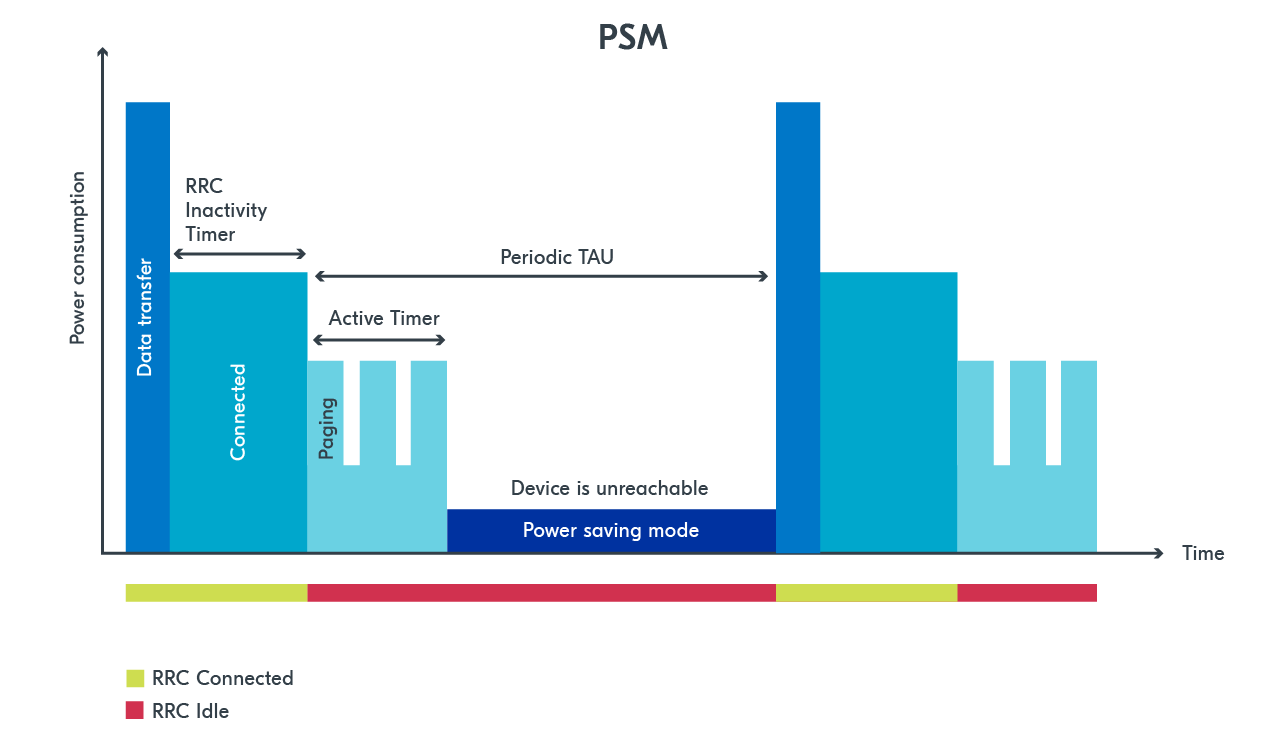
Figure 2. Illustration showing the Active Timer, PSM and periodic TAUs
What is AS-RAI and how does it work
Now that we understand how the power-saving techniques work in cellular IoT, let’s examine “Release Assistant Indication for Access Stratum” (AS-RAI) and see how it can optimize radio activity to save even more power.
As explained earlier, regardless of the power-saving technique implemented, the UE in RRC connected mode will always perform data transfer and then wait for an RRC Inactivity Timer period before engaging RRC idle mode.
The network dictates the RRC Inactivity Timer period, and the UE cannot negotiate it. Therefore, if this timer value is long, it can unnecessarily increase the power consumption while waiting to switch to RRC idle mode. This timer can last 5 seconds, or worst case, up to 60 seconds, which can seriously degrade the battery lifetime if the UE needs to have the radio On for an additional 60 seconds each time it is in RRC Connected mode.
AS-RAI gives the UE the capability of informing the network that it has concluded data transfer (no more uplink data), and it requests the network to release the radio resource (RRC release), thus allowing the UE to transition into RRC idle mode sooner. This means the UE skips the period of monitoring paging messages from the network (RRC Inactivity Timer).
This hugely impacts power consumption as without the use of AS-RAI, the UE would need to unnecessarily keep its radio on for the period of the RRC Inactivity timer.
AS-RAI was introduced in 3GPP release 14 for both LTE-M and NB-IoT, and it can save a lot of power consumption if supported by the network.
Let’s examine AS-RAI more closely with the aid of the illustration below.
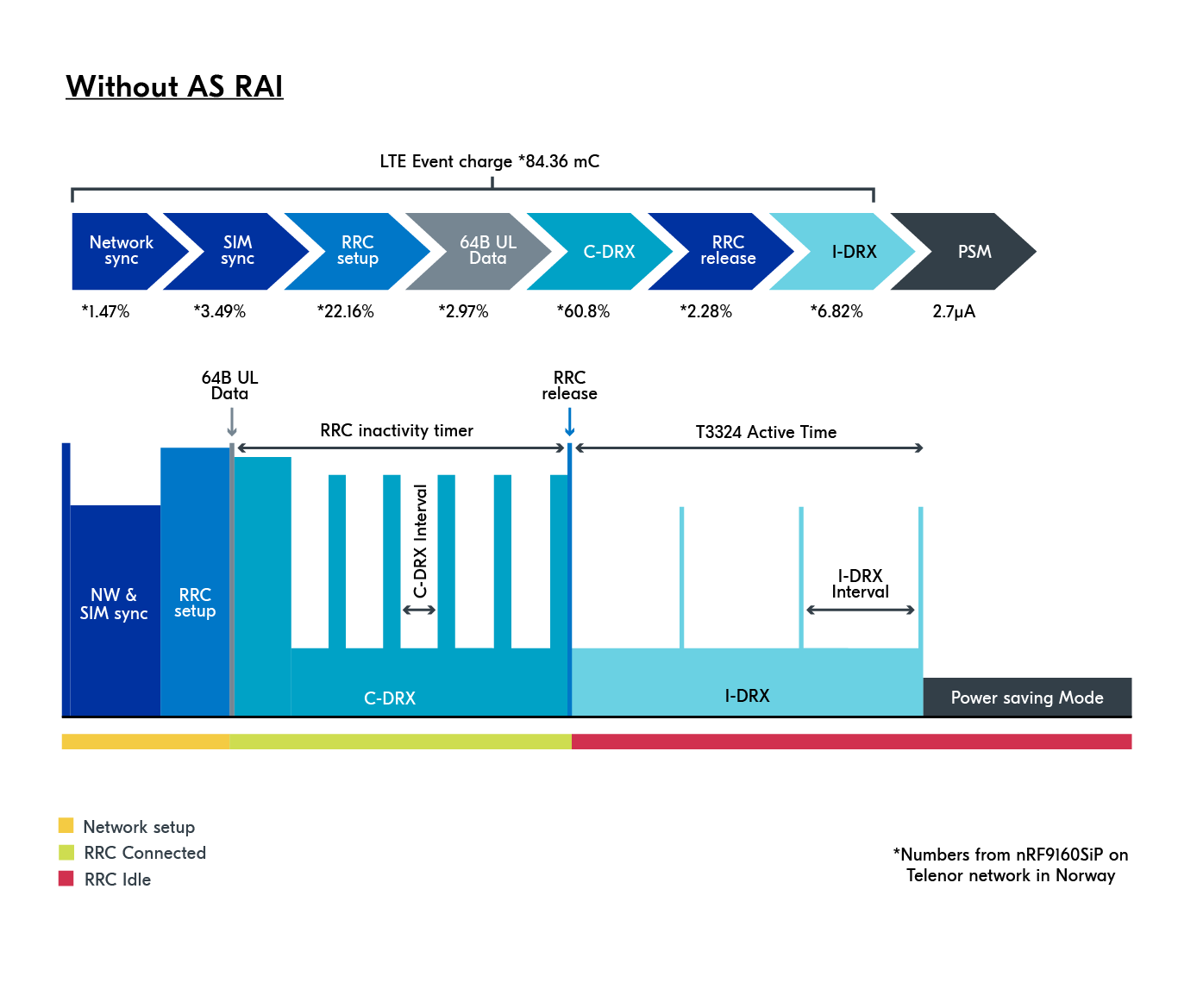
Figure 4. Power Consumption with AS-RAI disabled
Figure 4 shows the connection phases and the power consumption percentage corresponding to each phase when AS-RAI is not used. The blue bars depict the network sync, and RRC setup phases, followed by data transfer. After data transfer, the UE enters a period of cDRX. As shown in the percentages legend at the top of the figure, this cDRX mode consumes around 60% of the power consumption in this test scenario.
Only after the period of the RRC Inactivity timer, the RRC is released, and the UE can enter Idle mode, (eDRX, and/or PSM). The significance of AS-RAI is that it allows the RRC release to occur before the RRC inactivity timer runs out, thus effectively reducing power consumption by around 60% in this example. This is shown in Figure 5 below.
Please note that results will vary depending on your network operator and parameters used.
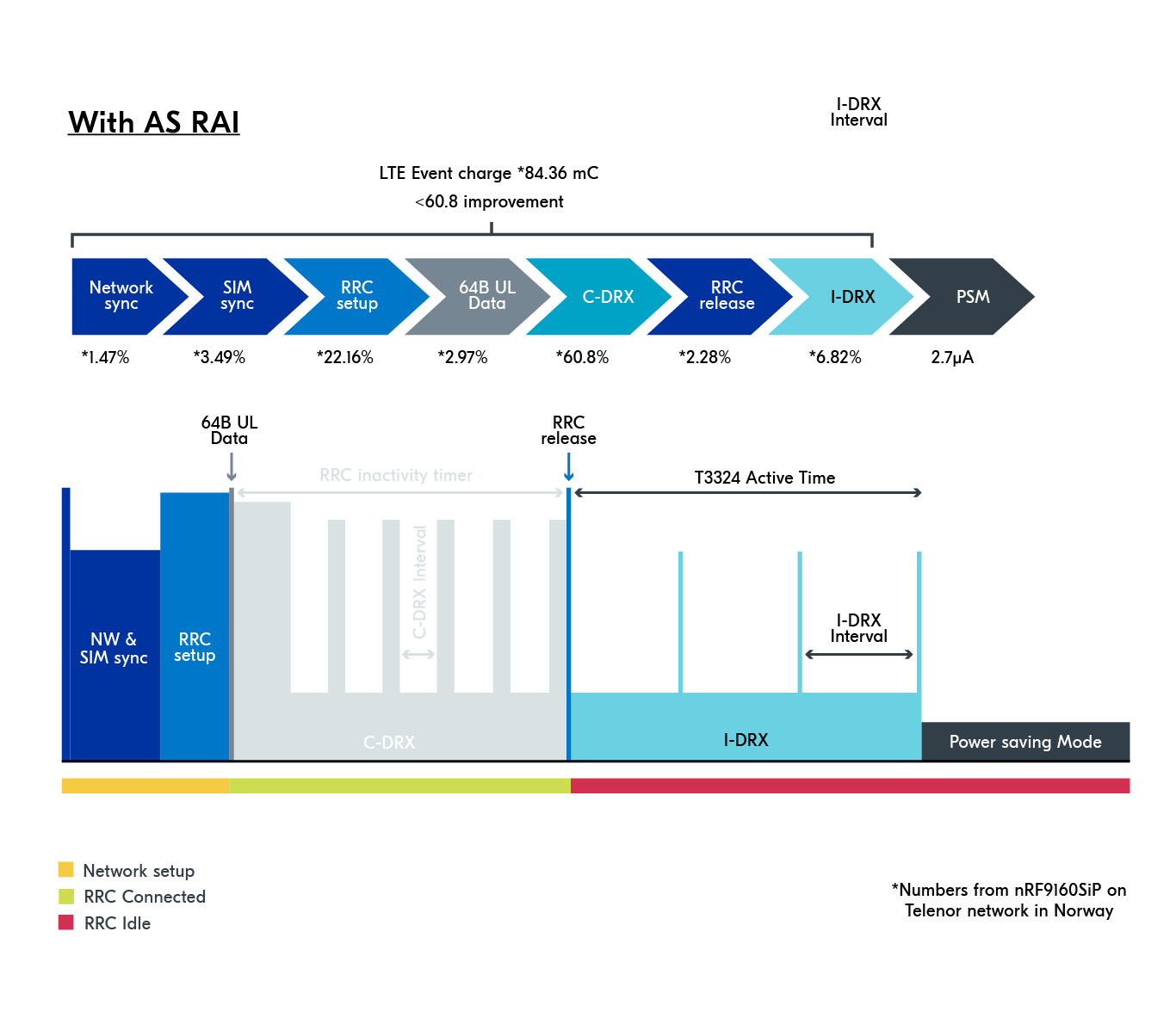
Figure 5. Power Consumption with AS-RAI enabled
As shown in Figure 5, with AS-RAI, the whole cDRX period is skipped, and the UE can enter into Idle mode right after it has concluded the data transfer.
Note these calculations are rough estimates based on the results from calculations gathered from our Online Power Profiler for LTE
Measurement results
The measurements results shown in this section are performed using the nRF9160 DK. The DK's power consumption is captured via Nordic’s Power Profiler Kit 2, which you can learn more about by clicking on its name, or you can watch this part from our webinar about how to use it.
eDRX measurement results
Test purpose
The purpose of this test is to show how eDRX affects power consumption and to examine the difference in power consumption between two different eDRX intervals.
Test scenario
Using LTE-M and Paging Time Window = 2.52 seconds
- Step 1: Measure the power consumed when eDRX is disabled (using regular iDRX with intervals= 640 ms)
- Step 2: Measure the power consumed between two eDRX events when the eDRX interval is set to 81.2 seconds
- Step 3: Measure the power consumed between two eDRX events when the eDRX interval is set to 163.64 seconds
Expected observation
When eDRX is disabled, the UE should be operating in iDRX, monitoring RX paging often (every 640 ms), thus giving higher power consumption.
While with eDRX enabled, we should observe less frequent RX paging monitoring, accompanied by a decrease in power consumption. We also expect to observe less power consumed when the UE is set for longer eDRX intervals.
Test results
As shown in Figure 6, when eDRX is disabled, the UE frequently monitors the radio for incoming messages, using regular iDRX.

Figure 6. Power consumption in iDRX
It is clear that when eDRX is disabled, in Idle mode, the UE still regularly monitors the radio channel for incoming messages, thus resulting in an average of 750 µA being consumed in 10 seconds.
However, with eDRX enabled and set to 81.2 seconds, Figure 7 shows that despite also being in a radio inactivity period, eDRX makes the UE monitor RX paging less frequently, substantially decreasing power consumption.
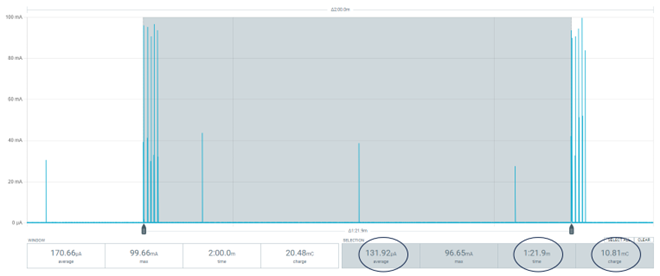
Figure 7. eDRX enabled and interval=81.2 sec with PTW=2.56 sec
Figure 7 shows that as opposed to consuming 750 µA in average current in 10 seconds, eDRX causes the UE to consume only 132 µA in 81.2 seconds. Note that these measurements include the SIM card clock stop current (see the 3 spikes between the eDRX events, which is SIM card synchronization), which in this case, is an additional avg. ~40µA. If the SIM card supports suspend/resume feature, this additional power consumption would be mitigated because the SIM card would suspend the activity in the eDRX intervals. This can and should be a requested feature to include when you order SIM cards from your carrier.
Also, note that you can see 4 Paging Occurrences (PO) and a network sync spike at the beginning of each eDRX event. These numbers vary depending on what network you are connected to.
Now let’s examine the effect of further increasing the eDRX interval, from 81.2 seconds to 163.64 seconds (2 mins and 43 seconds).
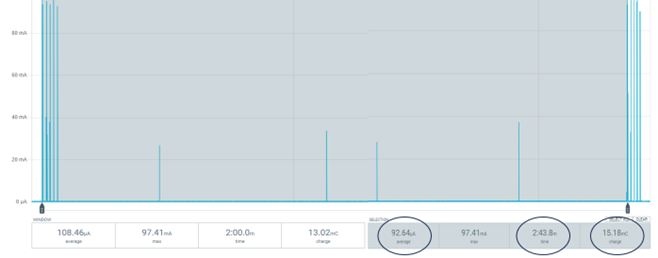
Figure 8. eDRX enabled and interval=81.2 sec with PTW=2.56 sec
As seen in Figure 8, extending the eDRX interval causes a further reduction in power consumption. As opposed to consuming 132 µA in 81.2 seconds, this eDRX setting consumes 92.64 µA in 163.64 seconds. This causes a huge reduction in power consumption and extends the cellular device’s battery lifetime significantly over extended periods. Again, these measurements include the SIM card clock stop current of ~40µA since it did not support suspend/resume feature.
PSM measurement results
Test purpose
The purpose of this test is to show how PSM saves power by comparing the power consumed in 10 seconds between transmissions when PSM is disabled vs. when PSM is enabled.
Test scenario
To test how PSM helps reduce power consumption, we set the following test using LTE-M:
- Step 1: Measure the power consumed in a 10-second period in-between transmissions with PSM disabled. In that case, only iDRX is enabled.
- Step 2: Measure the power consumed in a 10-second period in-between transmissions with PSM enabled.
Expected observation
What we expect to observe is a substantial decrease in power consumption in the 10-second period when PSM is enabled, as PSM is supposed to put the UE in a deep sleep state while staying synchronized with the network, thus avoiding the power which otherwise would be consumed if the device regularly turns its radio on to check for RX paging events.
Test results
As shown in Figure 9, when PSM is disabled, the UE’s radio regularly listens for incoming RX paging events. This explains the current consumption spikes we see in the shaded time period in between the two main transmission events depicted in Figure 9.
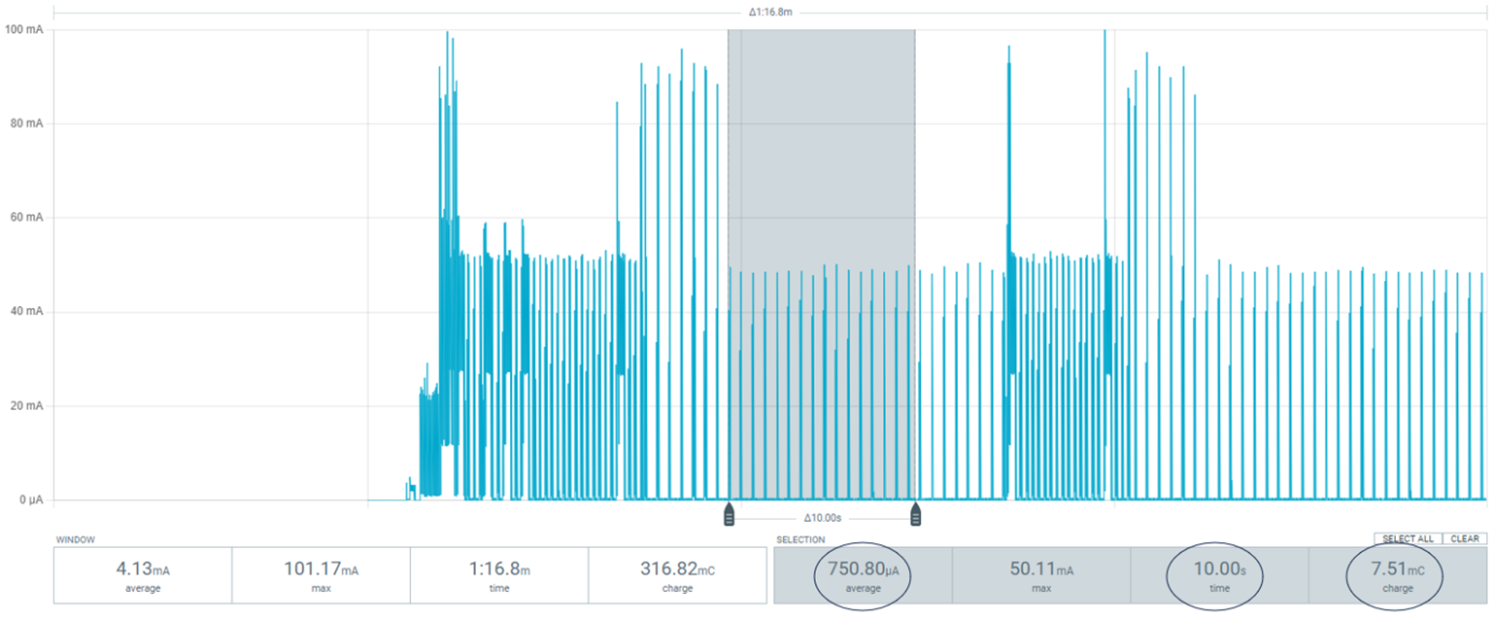
Figure 9. 10 seconds where PSM is disabled
As shown in the bottom bar, the average current consumed during this 10-second period is around 750 µA, yielding a charge of around 7.5 mC.
On the other hand, Figure 10 shows the power consumed in a similar 10-second period when PSM is enabled. Figure 10 shows a clear difference from Figure 9 as PSM causes the current consumption to decrease significantly as the UE is now in deep sleep mode.
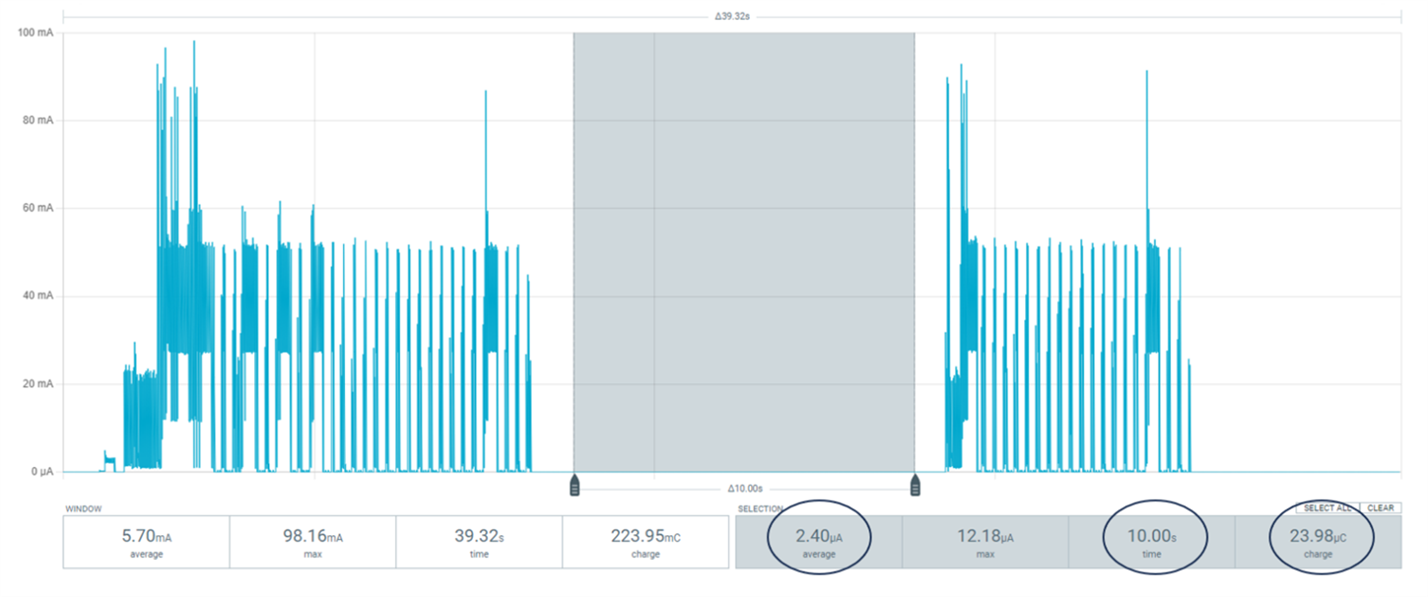
Figure 10. 10 seconds when PSM is enabled
As shown in the bottom bar, the average current consumed decreased from around 750 µA to 2.4 µA, causing the charge consumed to substantially decrease from 7.51 mC to around 24 µC.
Conclusion
These measurements serve to prove the huge importance and impact of PSM in running the UE in a deep sleep mode for an extended period of time to save battery lifetime.
It is important to note here that despite the fact that PSM and eDRX can coexist, that’s not always the optimal case. In some cases, using only one of these two features is more beneficial to a specific use case. For example:
- For applications where the UE does not expect to receive DL data and only needs to send UL data very rarely, such as every other day, then switching the modem off in between those UL messages is the most beneficial.
- For applications where the UE does not expect to receive DL data but needs to send UL data or TAUs in intervals of every hour or once a day, then using PSM is the most beneficial.
- For applications where the UE expects to receive DL data, then the UE needs to monitor RX paging often, then eDRX is more beneficial. This can be optimized by setting the eDRX interval to the maximum latency the application can accommodate.
RAI measurement results
Test purpose
The purpose of this test is to show how AS-RAI saves power by comparing the time it takes and the current consumed by the UE when sending a UDP packet with AS-RAI disabled vs. sending a UDP packet with AS-RAI enabled.
We will measure the time and power consumed throughout the whole event of sending a UDP packet.
Test scenario
To test how RAI affects power consumption, we set up the following test using NB-IoT:
- Step 1: With AS-RAI disabled, the UE is set up to transmit a UDP packet
- Step 2: AS-RAI is enabled, then one more UDP packet is sent
Expected observation
What we expect to observe is that without AS-RAI, the UE’s radio activity will spike to send the UDP packet, then the radio will stay On for the period of the RRC Inactivity Timer, and, afterward, go into PSM.
However, with AS-RAI enabled, we expect the UE’s radio to go directly into PSM after sending the UDP packet, thus saving the power that would be otherwise consumed if the UE had stayed in RRC connected mode for the period of the Inactivity Timer.
Test results

Figure 11. UDP event with AS-RAI disabled
Figure 11 shows the time and current consumption figures observed when sending a UDP packet with AS-RAI disabled. The UDP event here includes the connection setup, sending the UDP packet, then the RRC Inactivity timer period. We can see that the event took 6.4 seconds, and the average current consumed throughout the event was around 30 mA, which yields a battery consumption of 191 mC. As the figure shows, after the RRC Inactivity timer timed out, current consumption fell as the UE entered into PSM.
Now, let’s examine the UDP packet event with AS-RAI enabled and see if the UE will go into PSM faster.
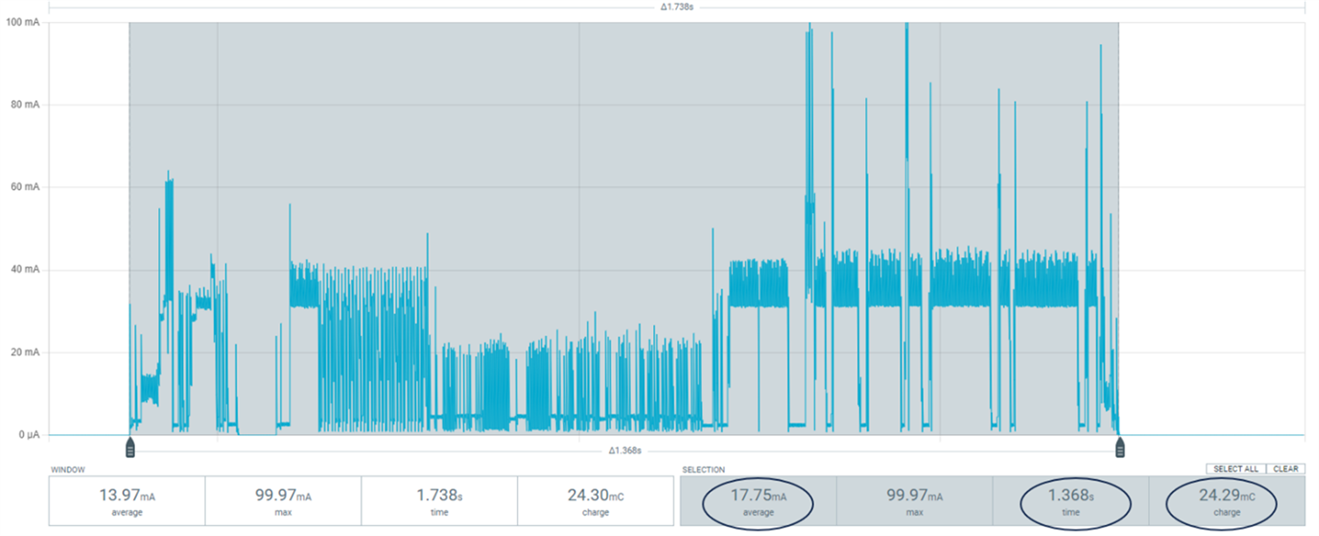
Figure 12. UDP event with AS-RAI enabled
As we can see in Figure 12, AS-RAI made the UE skip the RRC Inactivity timer, which reduced the total time of the event from 6.4 seconds to 1.4 seconds, with only 17.75 mA of current consumed on average, taking the battery consumption down from 191 mC to 24.3 mC.
Conclusion
These results show that AS-RAI reduced the time and power consumed for a UDP packet event, reducing the charge consumed by the UE to send a UDP packet by 87.3%, which in the long run could substantially maximize the battery lifetime, depending how often it needs to go in RRC Connected mode.
| Network State | Average power consumption | % change |
| iDRX @ 640 ms | 750.80 µA | |
| eDRX @ 81.2 s | 131.92 µA | 82.4 % decrease vs iDRX |
| eDRX @ 163.64 s | 92.64 µA | 87.7 % decrease vs iDRX |
| PSM enabled | 2.40 µA | 99.7 % decrease vs iDRX |
| AS-RAI disabled | 29.83 mA | |
| AS-RAI enabled | 17.75 mA | 40.5 % decrease vs AS-RAI disabled |
Closing
Cellular IoT technologies have huge potential to revolutionize how we think about low-power IoT applications. Their extensive infrastructure and expansive coverage promises to push the boundaries of how we think about low-power IoT applications, paving the way to a future of seamless and ubiquitous connectivity.
However, this huge potential can be pushed even further, with the optimization of cellular IoT devices’ battery lifetime. Leveraging power-saving features such as eDRX, PSM, and RAI, we are equipped to tackle this challenge. The aim of this blog post was to explain the theory behind the power-saving features, and with the aid of our measurement results, we hope to have shown their effectiveness in conserving power and substantially extending battery lifetime.




Top Comments